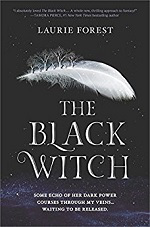
The Holy Machine (2003) by Chris Beckett
Ready Player One (2011) by Ernest Cline
Nexus (2012) by Ramez Naam
Infinity Welcomes Careful Drivers (1989) by Doug Naylor
Better Than Life (1990) by Doug Naylor
More Than This (2013) by Patrick Ness
Red Claw (2009) by Philip Palmer
The Quantum Thief (2010) by Hannu Rajaniemi
Crashing Heaven (2015) by Al Robertson And that’s just off the top of my head, and excludes films such as Ghost in the Shell (1995), Surrogates (2009), Avatar (2009), and, of course, The Matrix (1999).

C’mon, you remember Surrogates… Look at that wig!
Now, don’t misunderstand: I’m not knocking Roberts for a lack of originality, far from it — if anything, I commend the fact that he does not feel the need to show us what we’re already capable of imagining for ourselves from countless repetition. In his future version of the world, 90% of the population is hooked on the immersive MMORPG/alternative reality the Shine, but we’re never actually subjected to an extended treatise on precisely what the Shine does, nor do we have to witness our investigator-protagonist Alma enter it for convoluted reasons just so Roberts can show off his Big Ideas about how the internet will develop. The existence, omnipresence, lure, and complications of the Shine are enough, and this background is sketched in with wonderful restraint. I will take this trust in your readers over a “Wooo, look at me!” approach every single time. And, wonderfully, this allows Roberts’ light touch in the examination of his crumbling society to focus on beautifully illuminative aspects that might otherwise elude a more set-piece focussed approach: the lack of personal interaction, for one, is leading to a steady degradation of language, with people incapable of meeting in the Real without stumbling over Spoonerisms or malapropisms (“When they do come shout of shout shout out of the Eye-in…” is meant to be “When they do come out of the Shine…”), and this leads to some wonderful word-play over things like the naming of vehicles and the use of unfamiliar terms communicated phonetically, or someone pronouncing the word “no-one” as “nün”. There’s even a lovely moment where Alma doesn’t initially realise that the noise someone she’s talking to is making is a yawn, and I’d rather have my world filled in this way, I really would. Alma is a bit of a cipher, not so much a character as a person who performs actions, but Roberts shows huge invention in the situation in which she is trapped with her partner Marguerite. I’ll not go into more detail here, as it’s something I think should be preserved so you can watch it unfold yourself, but it’s nightmarish and oh-so-clever at the same time, bringing to mind about the only aspect of Dan Simmons’ Hyperion (1989) that I actually liked, and again hinting at far larger society and structure behind the one we’re explicitly shown. The deliberately Hitchcockian motif contrasted against this, which we’ll come to shortly, is only further enriched when you find out the reason behind a woman’s name changing every thirty minutes, or when you’re able to argue a self-aware door into legalistic revelation, or deselect small-talk from your overly-chatty self-driving car. This is bold, brilliant SF writing made all the more bold and brilliant for how small it makes these grand ideas: what would be everyday is communicated in an everyday fashion. It’s heroically simple, but I’ve been annealed in the fires of authors choosing to ignore it enough to know great SF writing when I read it. However, you’re here for the impossibility. So let’s get on. What you’re served against this background is a Hitchcock thriller with an impossible appearance at its core, and Roberts is wise to the importance of not neglecting this just to show off his world-building:“Somebody is dead,” said Alma. “It’s always the puzzle,” Marguerite countered. “It’s always that. But death is nothing. Death is the most ordinary thing in the world. It’s the one thing we’re all guaranteed to experience. Puzzles are different. Puzzles are special. Special isn’t a word we can use of a thing that literally everybody experiences.”The solution is world-appropriate and prepared for, but I wouldn’t say there were clues as such. Personally, and bear in mind that I have a soft spot for these SF-GAD crossovers, I really liked it — not everyone will, and the more traditional you take your impossibilities the less you’re going to go for it, but I love that there’s a clear line from the world we currently inhabit up to the world Roberts posits here and, therefore, the solution he gives us to his baffling crime. Also, it would feel to me like a bit of a waste if there wasn’t some aspect of his meticulously-realised world in the central plot…if this could be resolved using 1930s method, why the hell are you seeking to disguise hoary old ideas like that in a futuristic State of the Nation-esque thriller? That would be a waste. It’s not without problems in the reveal, however, in that — due to the lack of explicit clues — Alma must have a moment of staggering insight…fine, it’s been done before and worse…but the explanation is then occluded from the reader for solidly 60 or so pages of generic chase scenes and disappointingly wearying ‘thriller’ shenanigans. The start of the second half of the novel expands the scope of what Alma is looking into perfectly, but this thread then gets larger and larger until it crowds out what had been a supremely focussed little puzzle into…well, something less artistic and much more bland. And that is a real shame, especially given the creativity previously deployed around Alma and Marguerite’s situation, and the witty wordplay evinced throughout — she calls her mysterious and conspiracy-minded contact Derp Throat, the non-sentient droids deployed by the police department are called myrmidrones (goddamn, I loved that) — that gets swept aside. But, well, there’s a saving grace in the why behind the how that’s really quite wonderful — as motives go, it’s bold and memorable, and makes a huge amount of sense of a lot of the earlier occurrences in the plot. It’s as close to a saving coup de grace as the book can get after all the chasing and running and hiding and seeking, but that doesn’t stop it being a shame that such an underlong story (the hardcover is 228 pages) still has time to become samey and dull towards the end. Sure, any extra padding or extraneous plot threads would be equally unwelcome, but surely more could have been done with the Case of the Strangely Starving Man… So, look. If you’re looking to step outside of genre boundaries and wish to treated with intelligence when you do, you could do so, so much worse — believe me, I’ve read it. Roberts has written here propulsive, inventive, and immersive SF which extends the scope of the impossible crime and augurs well for the futures of both genres. If you want something even more than that, you’re clearly a very difficult person to please. ~ Previous Finding a Modern Locked Room Mystery for TomCat attempts: 1. Murder in the Oval Office (1989) by Elliott Roosevelt 2. First Class Murder (2015) by Robin Stevens 3. The Secrets of Gaslight Lane (2016) by M.R.C. Kasasian 4. Hard Tack (1991) by Barbara D’Amato Share this:





